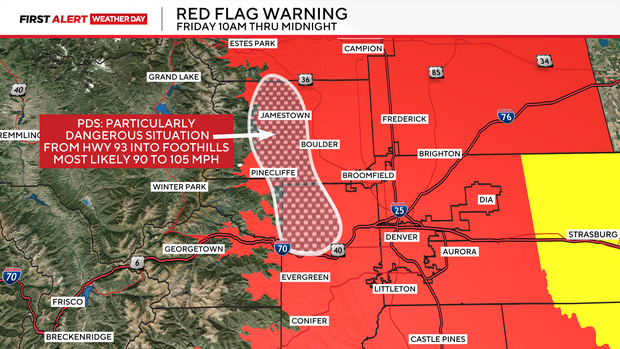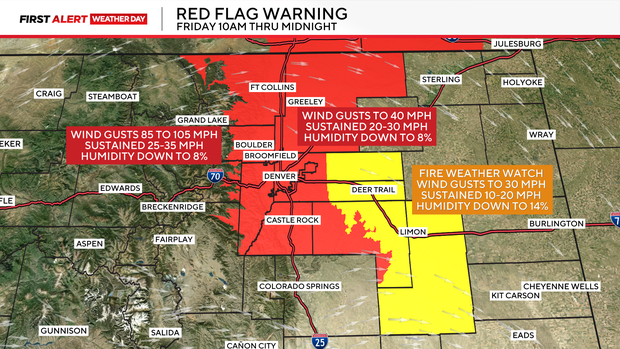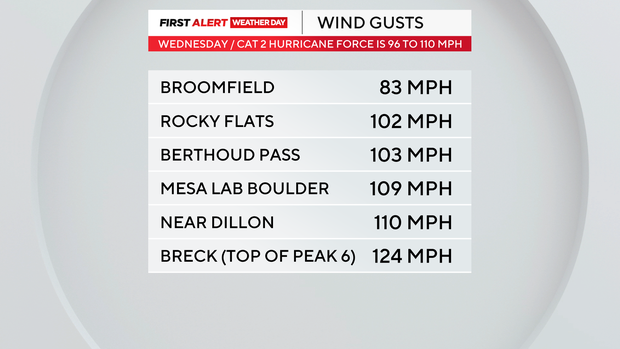Colorado
Wildlife officials aim to keep Colorado’s wolves from meeting the endangered Mexican wolf. Is separation the right goal?

A Mexican gray wolf called Asha wandered hundreds of miles across Arizona and New Mexico searching for a mate — no easy task for one of the most endangered mammals in the United States.
After five months of scouring hills and arroyos, she crossed Interstate 40 west of Albuquerque in the fall of 2022 and headed into the forests outside of Santa Fe. But when she traipsed across the interstate blacktop, she crossed an invisible boundary set by federal wildlife officials. As part of longstanding federal policy, any Mexican gray wolf found north of the interstate can be relocated — which is why Asha was darted and flown south, as documented in news stories and U.S. Fish and Wildlife Service reports.
The Mexican gray wolf subspecies has made a significant recovery over the last 25 years, but government biologists now worry that the reintroduction of the larger northern gray wolf in Colorado could derail that progress, should the two populations mix via wandering wolves like Asha.
Those worries prompted Colorado wildlife officials in September to sign first-of-their-kind agreements with New Mexico, Arizona and Utah. They will allow those states to relocate any roving northern gray wolves back to Colorado. The agreements will help keep the 10 wolves released in Colorado in December inside the state, crucial to establishing the self-sufficient population mandated by voters who approved reintroducing the species.
“This is not a typical kind of agreement for us to have between states,” said Eric Odell, the wolf conservation program manager at Colorado Parks and Wildlife. “It’s not common practice. Wildlife work usually involves geographic boundaries, not political ones.”
Much is at stake with the Mexican gray wolf. Its recovery took hold through an extensive, decades-long effort involving a captive breeding program, international transplantations and ongoing litigation.
The states’ recent agreements, coupled with the U.S. Fish and Wildlife Service’s I-40 policy, will create a buffer zone between the two wolf populations.
Without the precaution, Odell said intermixing could result in Colorado’s larger northern gray wolves taking dominant breeding positions in packs, changing the subspecies’ gene pool until they are indistinguishable. In effect, government biologists believe northern gray wolves likely would take over the Mexican gray wolf population.
“Having that hybridization would become detrimental to the Mexican wolf,” Odell said. “We’re working hard to keep (northern gray wolves) separate from those Mexican wolves.”
But conservationists question whether allowing the two to mingle would imperil the rare southern subspecies, and some say the Mexican gray wolf needs the northern gray wolf to survive. The wild Mexican gray wolf population suffers from a limited gene pool, so breeding with the northern gray wolf could help diversify the population.
“Historically, there was a spectrum of wolf species and subspecies from Mexico up to the Arctic Circle,” said Chris Smith, the Southwest wildlife advocate for WildEarth Guardians. “To have this wolfless zone between Colorado and Mexican gray wolves is a bizarre and arbitrary symptom of the politicization of our legal treatment of these wolves.”
A subspecies on the brink
The Mexican gray wolf — also called the lobo — is a smaller subspecies of the gray wolf that historically ranged across Mexico and into Arizona, New Mexico and Texas. The Mexican gray wolf is managed separately under the federal Endangered Species Act than the northern gray wolf, which numbers in the thousands across the northern Rocky Mountains and the Great Lakes region.
People nearly eradicated the Mexican gray wolf from both the United States and Mexico by the 1970s. Decades of unregulated hunting and targeted trapping by the federal government to protect livestock took their toll.
By 1977, there were only seven known remaining Mexican gray wolves in the two countries.
Wildlife officials returned the subspecies to the wild in 1998 and, after decades of management, at least 241 Mexican gray wolves now roam New Mexico and Arizona, according to the Fish and Wildlife Service.
The federal agency imposed the boundary along I-40, which cuts across the Southwest, in part because the documented historical range of the subspecies did not extend north of the interstate. Officials also faced pressure from ranching and hunting interests to restrict the recovery area.
But the wild population has a lack of genetic diversity.
Each wild Mexican gray wolf’s genes are as similar to the next as siblings’ genes would be, said Michael Robinson, a senior conservation advocate at the Center for Biological Diversity and the author of a book on wolf management.
Instead of creating a wolfless buffer zone, Smith and Robinson said, wildlife managers should introduce Mexican gray wolves into southwestern Colorado.
Those wolves then would breed with northern gray wolves and add much-needed genetic diversity to the subspecies, while minimizing the risk of the northern species’ genes taking over the Mexican gray wolf population. The risk to the Mexican gray wolf would be greater if northern gray wolves established themselves farther south in the core of the Mexican gray wolf’s habitat.
“We can try to approximate the gradation of wolf types that (once) existed from north to south,” Robinson said.
Wandering under watch
The technical working group that shaped Colorado’s wolf reintroduction plan considered reintroducing Mexican gray wolves here but found them the “least desirable” option.
The ballot measure that mandated Colorado’s reintroduction of wolves did not specify whether a subspecies could be reintroduced. But the group wrote in its final report that the Mexican gray wolf should be the lowest priority for reintroduction because Colorado was not part of its historical range. It also cited logistical management concerns due to the subspecies being managed separately under the Endangered Species Act.
“Because they are listed as a unique entity under the ESA, maintaining the genetic uniqueness of this subspecies is paramount,” the November 2021 report states. “If Mexican wolves were present in Colorado, premature interbreeding with wolves from the north could compromise the Mexican wolf recovery effort.”
It’s unlikely that Mexican gray wolves roamed in Colorado before their extirpation, but the subspecies is better adapted than the northern gray wolf to warmer, drier climates — which is the expected future for southwest Colorado as the climate shifts, Smith said.
“We have to recognize that we’re imposing not just political boundaries, but also pretty complicated legal frameworks on wildlife that do whatever they want on a landscape,” he said. “It’s a problem that we’ve painted ourselves into.”
Biologists have said that Mexican gray wolves need at least three separate but connected populations to thrive, Robinson noted. One study found that one of those populations should be located in southwest Colorado.
It would have made sense to keep the Mexican gray wolves separate when there were only a few dozen of them, Robinson said. But the population is now robust enough to allow some northern gray wolf genetics into the pack, he said.
While all of Colorado’s 12 current wolves — including two that predated the reintroduction effort — and the wolves released in the state in coming years will have radio collars, their progeny will not. That will make tracking whether the wolves have moved into neighboring states more difficult, Odell said.
“It’s not in perpetuity,” Odell said of the agreements with the other states. “We’ll revisit this in time and see how things are going.”
Get more Colorado news by signing up for our daily Your Morning Dozen email newsletter.

Colorado
Avs’ home heater continues as Colorado beats Winnipeg 3-2 in chippy win

The Avs on home ice remain as close to invincible as a sports team can get.
Colorado beat Winnipeg 3-2 on Friday at Ball Arena, improving to 14-0-2 in Denver. The win extended the longest home point streak to start a season in franchise history, and the Avs’ 12th straight victory at home is the longest in the NHL this season and second-longest streak in franchise history.
“When other teams play here, it’s tough to come into this building,” defenseman Josh Manson said. “When the fans get behind us, momentum shifts. We score a goal, they get loud, the building gets rocking and the momentum starts to carry and we can feel it. And from there, we can start pouring it on.”
The Avs didn’t play perfect on Friday, giving up a shorthanded goal and battling through several Winnipeg surges after reigning Hart Trophy and Vezina Trophy winner Connor Hellebuyck settled into the game.
But as they have all season, Colorado found a way to win in front of the Avs faithful in a game featuring four scuffles, highlighted by a fist fight between Manson and the Jets’ Tanner Pearson. The Avs’ only home losses this year came in a pair of 5-4 shootout setbacks, to Dallas on Oct. 11 and Carolina on Oct. 23.
Since then, Colorado’s been a sure bet to prevail at “The Can.”
“This was one of our better defensive efforts of the year — physical, and we spent some time in the D-zone in the second period and didn’t give up any dangerous chances five-on-five really,” Avs head coach Jared Bednar said. “Made a mistake on the power play, made a mistake on the penalty kill, but besides that I liked our game tonight.”
The Avs started fast against struggling Winnipeg, which has battled injuries and inconsistencies while looking like a shadow of the team that won last season’s Presidents’ Trophy. Colorado blitzed Hellebuyck with a number of quality shots in the first 10 minutes, then finally broke through with Brent Burns’ goal.
“Right from the drop of the puck, we were taking it to them,” Manson said. “… (During this stretch of home dominance) we’ve set the pace on teams.”
Burns, the oldest active NHL player, wristed one home from behind the right playoff circle as his shot deflected off the skate of a Winnipeg defender to make it 1-0.
Five minutes later, Colorado made it 2-0 thanks to a highlight-reel combination between Nathan MacKinnon and Martin Necas. MacKinnon, tied with Edmonton’s Connor McDavid for the NHL points lead entering the night with 58, made a precise pass that split two defenders and found Necas streaking down the center of the ice. Necas beat Hellebuyck on the bottom right shelf.
“When we beat them up ice, we’re capable (of finishes like that),” Necas said.
But in the second period, Hellebuyck tightened up, turning away several scoring chances as the Jets killed three Avs power plays and the crowd buzzed off of Manson’s fight with Pearson.
After both players went to the penalty box just under three minutes into the period, the jumbotron cam jumped from Manson to Pearson, with the former getting met with deafening cheers and the latter with a chorus of boos.
“(That) gets you fired up a little bit,” Parker Kelly said.
But on Colorado’s third man-advantage of the period, the Jets stole the momentum back with a short-handed goal.
Off a Hellebuyck save, Alex Iafallo possessed the puck and cleared up ice high off the glass. Morgan Barron outskated Cale Makar down the ice to retrieve the bouncer, then beat Scott Wedgewood one-on-one with a backhanded shot to quiet the crowd and make it 2-1 with 37 seconds left in the frame.
“We weren’t worried after that,” Manson said. “If anything, I was thinking in my mind, ‘We’re going to go get one here at the start of the third period.’”
The Avs did just that.
Less than two minutes into the third, Colorado grabbed the mojo right back. Manson blasted a shot from up near the blue line, which deflected off a screening Kelly and past Hellebuyck for a 3-1 lead.
“I saw it go to low to high and I just tried to beat my guy to the net,” Kelly said. “(Manson) was walking down mainstream. Honestly, I was just there to try and provide a screen. I thought (Manson) was going to rip it. I don’t know if it got tipped, but the shot was along the ice and my stick was on the ice. Just tried to get a little touch on it.”
But the Jets quickly answered about 90 seconds later, capitalizing on a hooking penalty on Devon Toews as Mark Scheifele scored just seven seconds into Winnipeg’s power play to again make it a one-goal game.
Midway through the period, the Avs had a goal wiped off the board. Kelly deflected the puck into the net off a shot by Samuel Girard, but Kelly used high-sticking to do it, negating the score.
From there, Wedgewood and the Colorado defense held on as the Avs notched their 56th and 57th points of the season. Wedgewood made 20 total saves, including two saves in the final minute to seal the win for Colorado (25-2-7).
“We got heavy around the net, and Wedgie played great between the pipes,” Manson said. “We were making good decisions with the puck at the end of the game… We made smart plays and didn’t force anything in the last eight, 10 minutes of that game.”
The longest home win streak in Avs history came during their championship season in 2021-22, when Colorado won 18 straight in Denver from Nov. 11 to Jan. 30.
Want more Avalanche news? Sign up for the Avalanche Insider to get all our NHL analysis.
Colorado
Several Colorado highways temporarily closed due to high winds

BOULDER, Colo. (KKTV) – Several Colorado highways are closed due to high winds reaching up to 80 MPH in some locations.
According to the Colorado Department of Transportation (CDOT), the closures currently in place include:
- CO 93 both directions from 64th Ave (Arvada) to CO 170.
- CO 72, both directions from CO 7 to Ward Road.
- US 36, both directions from Boulder to Lyons.
- CO 128, both directions from CO 93 to McCaslin Boulevard.
Transportation officials said the winds may also cause traffic signal outages.
If traffic lights are experiencing a power outage, CDOT said drivers must treat it as a four-way stop:
- Come to a complete stop at the stop line or before entering the intersection.
- Vehicles proceed one at a time, in the order they arrived.
- If two vehicles arrive at the same time, the driver on the right goes first.
- Always yield to pedestrians and cyclists already in the crosswalk.
- Make eye contact when possible and proceed cautiously – do not assume others will stop.
Drivers are also encouraged to reduce speeds, keep both hands firmly on the steering wheel, and be alert for debris, downed signs and sudden gusts. High-profile vehicles, such as trucks, vans and vehicles towing trailers, are encouraged to avoid travel when closures or restrictions are in place.
CDOT also reminds commercial drivers to ensure tire chains are properly secured and not dragging, which can create sparks and increase wildfire risk during dry, windy conditions.
Copyright 2025 KKTV. All rights reserved.
Colorado
Dangerous fire situation looming for parts of Colorado’s Front Range, as another day of strong winds lies ahead

Dangerous weather conditions in Colorado are expected to team up for a surge in the Front Range fire danger. For most of the day Friday conditions will be favorable for rapid fire spread. Avoid outdoor burning and any activity that may produce a spark. Friday will be a First Alert Weather Day.
The triple threat of hurricane force winds, record heat and single digit relative humidity will all be in force from 10 a.m. to midnight on Friday. That is when a red flag warning for high fire danger is issued.
For the first time in Colorado, the National Weather Service office in Boulder has issued an extra warning know as “A Particularly Dangerous Situation” for northwest Jefferson and western Boulder counties for possible wind gusts of 85 to 105 mph.
The worst areas will be from Highway 93 up into the higher foothills. That, combined with single digit relative humidity, will make conditions worse that what the state experienced on Wednesday.
For the northern Front Range, the strongest winds will be west of I-25 into the foothills. Along and east of the I-25 corridor including the Denver metro area, winds may gust up to 40 mph with humidity levels as low as 8%. For that reason, the entire Denver metro area is in the warning area.
The strong winds will be warming downslope winds for eastern Colorado with highs on Friday shooting up into the 60s and 70s. Denver may have a new record high of 70 degrees. The old record is 67 degrees last set in 2023.
Top wind gusts may likely be stronger than Wednesday. Those gusts were hurricane force in some areas of the foothills and mountains with gusty winds comparable to those of a category 2 or 3 hurricane.
-

 Iowa5 days ago
Iowa5 days agoAddy Brown motivated to step up in Audi Crooks’ absence vs. UNI
-

 Iowa7 days ago
Iowa7 days agoHow much snow did Iowa get? See Iowa’s latest snowfall totals
-

 Maine4 days ago
Maine4 days agoElementary-aged student killed in school bus crash in southern Maine
-

 Maryland5 days ago
Maryland5 days agoFrigid temperatures to start the week in Maryland
-

 Technology1 week ago
Technology1 week agoThe Game Awards are losing their luster
-

 South Dakota6 days ago
South Dakota6 days agoNature: Snow in South Dakota
-

 New Mexico3 days ago
New Mexico3 days agoFamily clarifies why they believe missing New Mexico man is dead
-

 Nebraska1 week ago
Nebraska1 week agoNebraska lands commitment from DL Jayden Travers adding to early Top 5 recruiting class


























